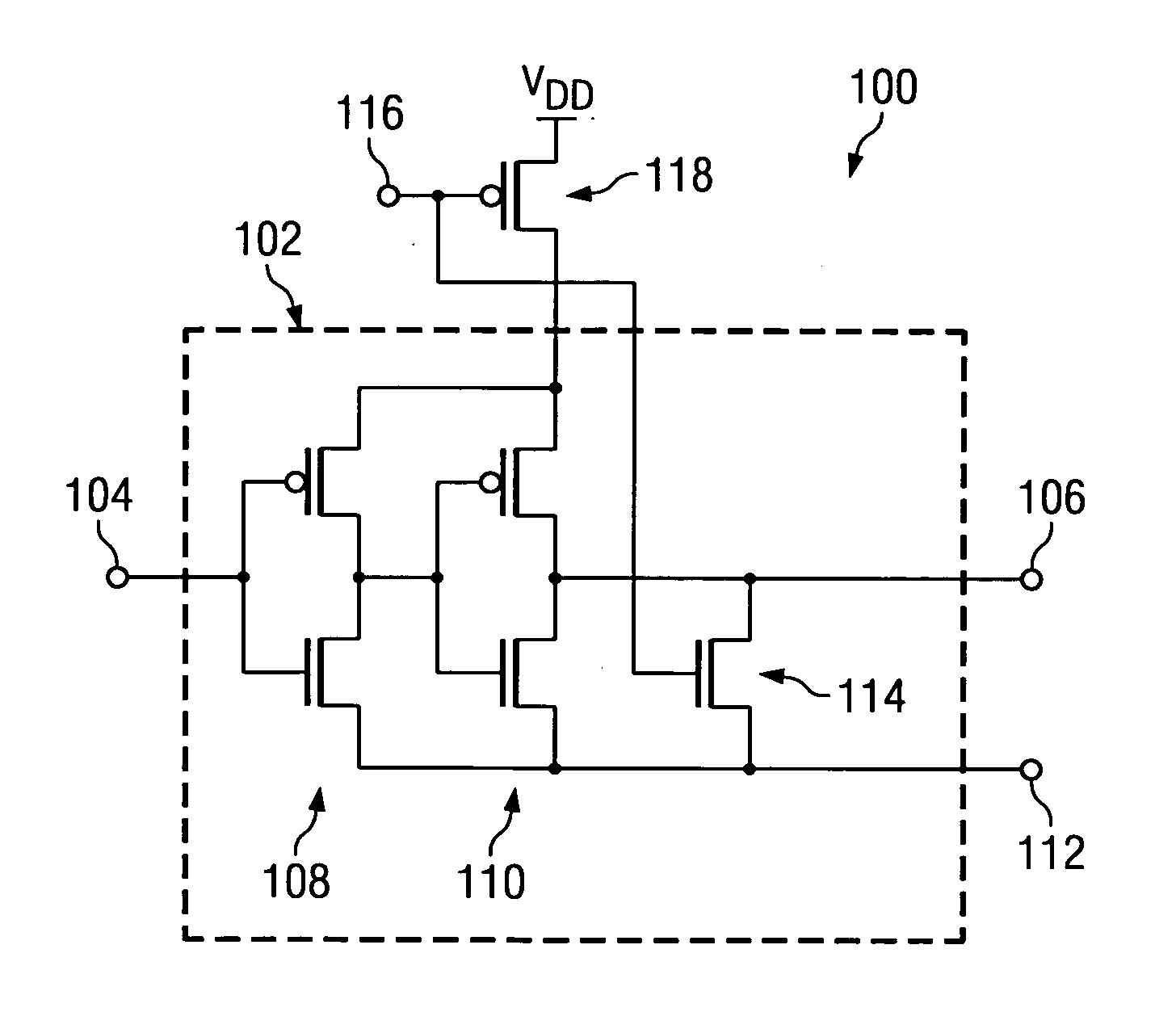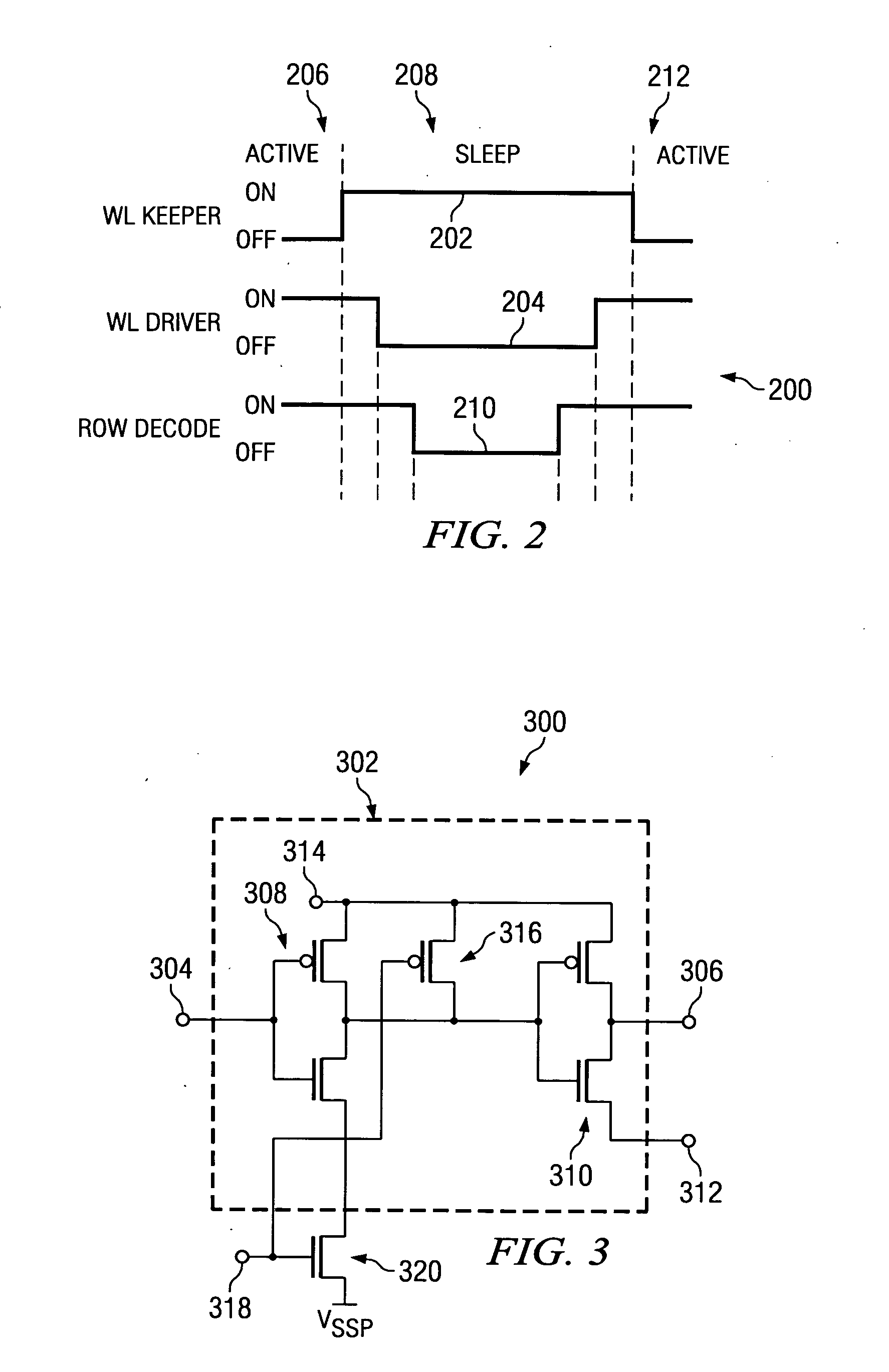System for reducing row periphery power consumption in memory devices
a memory device and row periphery technology, applied in the field of semiconductor devices, can solve the problems of inability to fully or even partially power down the circuitry surrounding a given row (i.e., the row-periphery circuitry) and the stability and integrity of the data stored in the corresponding row, and achieve the effect of reducing the power consumption of the row periphery, reducing the operating voltage and power consumption, and avoiding negative effects on the stability and reliability of data stored
- Summary
- Abstract
- Description
- Claims
- Application Information
AI Technical Summary
Benefits of technology
Problems solved by technology
Method used
Image
Examples
Embodiment Construction
[0019] While the making and using of various embodiments of the present invention are discussed in detail below, it should be appreciated that the present invention provides many applicable inventive concepts, which can be embodied in a wide variety of specific contexts. The invention will now be described in conjunction with SRAM memory architecture. The specific embodiments discussed herein are merely illustrative of specific ways to make and use the invention and do not limit the scope of the invention.
[0020] The present invention provides a versatile system that reduces SRAM power consumption during sleep mode. As previously noted, minimizing SRAM standby power during sleep mode is critical to many power sensitive applications, especially those that rely on low-voltage battery sources for power (e.g., wireless communications devices).
[0021] For an array during sleep mode, conventional systems often relied on raising ground voltage levels, with respect to supply voltage levels,...
PUM
 Login to View More
Login to View More Abstract
Description
Claims
Application Information
 Login to View More
Login to View More - R&D
- Intellectual Property
- Life Sciences
- Materials
- Tech Scout
- Unparalleled Data Quality
- Higher Quality Content
- 60% Fewer Hallucinations
Browse by: Latest US Patents, China's latest patents, Technical Efficacy Thesaurus, Application Domain, Technology Topic, Popular Technical Reports.
© 2025 PatSnap. All rights reserved.Legal|Privacy policy|Modern Slavery Act Transparency Statement|Sitemap|About US| Contact US: help@patsnap.com



